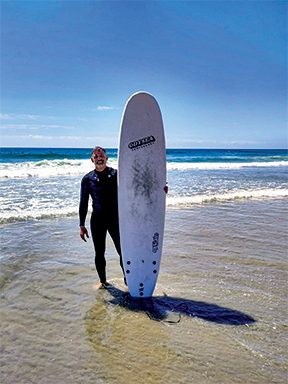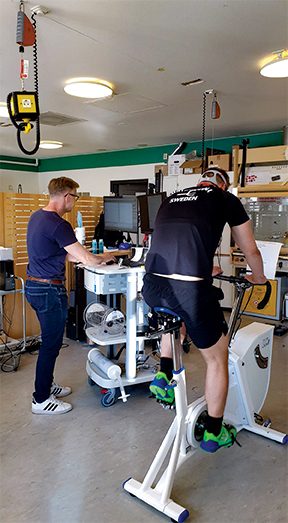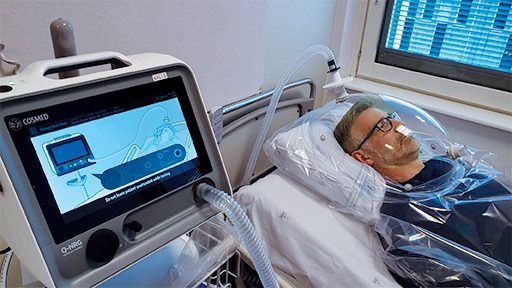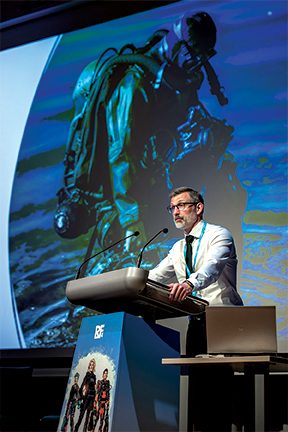Developing Rebreathers and Decompression through Applied Physiology and Engineering
OSKAR FRANBERG LEADS THE RESEARCH GROUP in marine systems engineering at the Blekinge Institute of Technology in Karlskrona, Sweden, and is managing director of the Swedish National Underwater Technology Center. This father of three is an engineer by training and has been active in dive research, especially rebreather physiology, for more than 20 years.
How did you get involved with dive physiology?
I’ve always been fond of the sea and enjoyed swimming and snorkeling as a kid. My first real dives were in 1996, when I became an explosive ordnance disposal (EOD) diver during my service in the Swedish navy, and I have kept diving ever since. One of my most noteworthy dives was during the excavation of the 17th-century Swedish warship Kronan, where we found and salvaged a chest with 6,500 silver coins dating back to 1675.
After my military service I studied engineering at the Chalmers University of Technology in Gothenburg and developed and patented a new type of rebreather that extracts oxygen from the air and releases it with heat during the dive. This led to a collaboration with the navy that later funded research on rechargeable carbon dioxide scrubber technologies.
I worked for a few years in Stockholm at the Military Diving Center (MDC) — an interesting work environment with a mix of engineers, physicians, and operative divers — before starting my PhD in biomedical engineering at the KTH Royal Institute of Technology in a joint group with the Karolinska Institute (KI). This versatile environmental physiology group encompassed the major fields, including aerospace, sports, thermal, and dive physiology.

Tell us about your PhD dissertation.
My PhD was about oxygen content in mechanical rebreathers. I tested several rebreathers and made mathematical models of the oxygen content in them. To verify the models, I developed a metabolic simulator to test and measure the oxygen and carbon dioxide content in the rebreathers. It could also simulate ventilation perfusion problems in the lung. This simulator has been proven useful in testing medical regulator ventilators and anesthesia machines.
Who are you working for right now?
In 2015 the vice chancellor at the Blekinge Institute of Technology invited me to help develop a five-year marine engineering program, so I moved to Karlskrona and took a hiatus from dive research. We started the first class after two years, and I remained the engineering program manager for the first three years.
It is not a classical naval architecture program — it’s more focused on marine systems engineering and marine robotics. This broader focus makes the program tougher than usual. Of the first 20 enrollees, 30 percent graduated after five years, but employers recruited all of them directly out of the program. We now enroll about 30 students per year, of which about 40 percent are women, which is quite extraordinary for an engineering program.
Did you miss doing dive research during that time?
Yes, absolutely. Diving is what got me into research. But I was not completely disconnected since I still supervised PhD students. I like the mix I get with the more technology-driven development of remotely operated vehicles (ROVs), autonomous underwater vehicles (AUVs), and submarines.

© CLARA SJÖBLOM

One of your projects was creating new Swedish navy decompression tables. Tell us about that.
Like many countries, Sweden has been using U.S. Navy decompression tables since the 1950s. Despite a big effort to rewrite them in 1988, the resulting SWEN 88 tables saw limited practical use, so Sweden kept using the U.S. Navy tables. In 2010 the Swedish navy switched to using the tables from the U.S. Navy Diving Manual, Revision 6.
At the same time our EOD divers switched diving units, and we started seeing quite a lot of decompression sickness (DCS) in the navy from 2012 onward. During our investigation we saw multiple contributing factors, one of which was the switch to composite cylinders for a lower magnetic signature for the EOD divers. It turned out that those cylinders leaked gas, and we didn’t realize that they were selectively leaking oxygen. As a result, we now have very strict rules for gas analysis.
We also saw a few profiles in the U.S. Navy Diving Manual, Revision 6 that generated more DCS. At first we thought these decompression sequences were a technological issue since we had just switched units, and it took a long time for us to figure out the problem.
When the U.S. Navy released Revision 7 of their dive manual, we had to choose whether to follow this revision or develop something ourselves. To leverage the benefits of a proprietary algorithm that could be customized for any dive profile and system as well as digitized for a dive planning program or computer, the navy staff decided to develop its own solution. Thus I received a grant from the Swedish navy to create a working group to develop a new table, SWEN21.
I hired an engineering PhD student and a postdoc mathematician as well as two medical doctors to integrate decompression physiology. It took a lot of investigative research to figure out how to develop decompression algorithms, and we learned a lot about decompression models and the decompression tables used in other countries, such as France, Canada, and the Netherlands.
We ended up with validations of a model that is closest to that of Edward Thalmann — one that calculates exponential gas uptake and more linear offgassing. Our recommendation to the Swedish navy was that this was the most validated model available and not far from U.S Navy Revision 7.
How did you validate the decompression tables?
The Swedish navy staff wanted a table with only a 1 percent risk of all-over DCS and 0.1 percent risk of central nervous system DCS instead of the 2.3 percent risk of the U.S. Navy Revision 7 tables. We got close to that level in our model and then had to develop the testing process.
The Swedish navy had closed the MDC and built the Diving and Naval Medicine Center (DNC), a new dive research facility in Karlskrona in southern Sweden. It allows for human diving to a depth of 525 feet (160 meters) in a waterpot chamber and unmanned breathing apparatus testing to a depth of 656 feet (200 meters). It also has a swim flume, indoor and outdoor pools, a dive school, and a technical development section and associated researchers. This was the perfect location for our validation dives.
We did 163 dives on different profiles and studied symptoms and bubble scores, cardiac 2D ultrasound, and audio Doppler. We successfully validated the tables, which will be implemented later this year.
Where do you see dive research going in the next 10 years?
We haven’t really started addressing ergonomics in diving — not just breathing ergonomics, but also the man–machine interface. I think that will be the challenge for the next decade or so.
You were at Rebreather Forum 4, where we talked about accidents and fatalities and how they are still happening at a disturbing rate. What is your take on that?
I think rebreathers are becoming more mainstream, and I see the risk is that rebreather divers now are less trained and less educated. They progress in their training too quickly, too far, and too soon.
Rebreather diving is complex with advanced interaction of both medicine and technology. I see even specialized engineers who are supposed to understand fundamental concepts such as compression and thermodynamics. But it even takes them a long time to grasp the fundamental concepts, such as constant partial pressure of oxygen (pO2)versus constant oxygen fraction or oxygen metabolism. The average diver will likely have more difficulty understanding those complex concepts. AD

© Alert Diver — Q3 2023